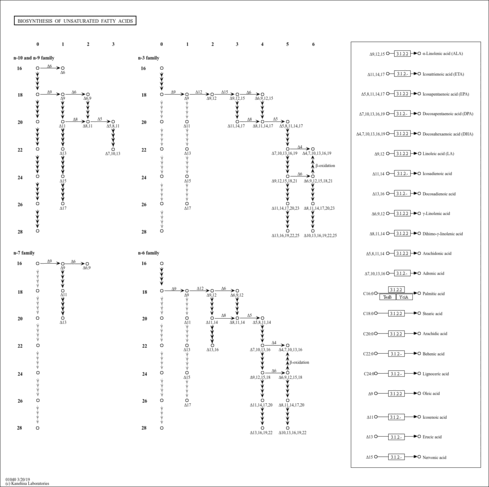| Experimental LC-MS/MS | LC-MS/MS Spectrum - Tetracosanoic acid Quattro_QQQ 10V, Positive-QTOF (Annotated) | splash10-016r-0509000000-b590f3868a4aa3c86803 | 2012-07-25 | HMDB team, MONA | View Spectrum |
| Experimental LC-MS/MS | LC-MS/MS Spectrum - Tetracosanoic acid Quattro_QQQ 25V, Positive-QTOF (Annotated) | splash10-004i-0903000000-a6d1b482b61c2d36ee1d | 2012-07-25 | HMDB team, MONA | View Spectrum |
| Experimental LC-MS/MS | LC-MS/MS Spectrum - Tetracosanoic acid Quattro_QQQ 40V, Positive-QTOF (Annotated) | splash10-004i-0900000000-4ef3dd8c92115a6d4e0c | 2012-07-25 | HMDB team, MONA | View Spectrum |
| Experimental LC-MS/MS | LC-MS/MS Spectrum - Tetracosanoic acid EI-B (HITACHI M-80B) , Positive-QTOF | splash10-07bf-9000000000-2ae141518702212751a7 | 2012-08-31 | HMDB team, MONA | View Spectrum |
| Experimental LC-MS/MS | LC-MS/MS Spectrum - Tetracosanoic acid LC-ESI-QTOF (UPLC Q-Tof Premier, Waters) , Positive-QTOF | splash10-0a4i-0900000000-3c3e69329be8a7148076 | 2012-08-31 | HMDB team, MONA | View Spectrum |
| Experimental LC-MS/MS | LC-MS/MS Spectrum - Tetracosanoic acid ESI-TOF 20V, Negative-QTOF | splash10-004r-0791000000-10ab351997f48e512657 | 2017-08-14 | HMDB team, MONA | View Spectrum |
| Experimental LC-MS/MS | LC-MS/MS Spectrum - Tetracosanoic acid ESI-TOF 10V, Negative-QTOF | splash10-004r-0791000000-10ab351997f48e512657 | 2017-08-14 | HMDB team, MONA | View Spectrum |
| Experimental LC-MS/MS | LC-MS/MS Spectrum - Tetracosanoic acid ESI-TOF 30V, Negative-QTOF | splash10-004r-0791000000-10ab351997f48e512657 | 2017-08-14 | HMDB team, MONA | View Spectrum |
| Experimental LC-MS/MS | LC-MS/MS Spectrum - Tetracosanoic acid ESI-TOF 20V, Negative-QTOF | splash10-014i-0009000000-5c9df57aa4e8e48bd80f | 2017-09-12 | HMDB team, MONA | View Spectrum |
| Experimental LC-MS/MS | LC-MS/MS Spectrum - Tetracosanoic acid ESI-TOF 10V, Negative-QTOF | splash10-014i-0009000000-a22a23dbfe780a163a38 | 2017-09-12 | HMDB team, MONA | View Spectrum |
| Experimental LC-MS/MS | LC-MS/MS Spectrum - Tetracosanoic acid ESI-TOF 10V, Negative-QTOF | splash10-014i-0009000000-7907c6ab3ef19e9cdf86 | 2017-09-12 | HMDB team, MONA | View Spectrum |
| Experimental LC-MS/MS | LC-MS/MS Spectrum - Tetracosanoic acid ESI-TOF 30V, Negative-QTOF | splash10-014i-0009000000-847587fdc96a653e9651 | 2017-09-12 | HMDB team, MONA | View Spectrum |
| Experimental LC-MS/MS | LC-MS/MS Spectrum - Tetracosanoic acid LC-ESI-TOF , negative-QTOF | splash10-014i-0009000000-5c9df57aa4e8e48bd80f | 2017-09-14 | HMDB team, MONA | View Spectrum |
| Experimental LC-MS/MS | LC-MS/MS Spectrum - Tetracosanoic acid LC-ESI-TOF , negative-QTOF | splash10-014i-0009000000-a22a23dbfe780a163a38 | 2017-09-14 | HMDB team, MONA | View Spectrum |
| Experimental LC-MS/MS | LC-MS/MS Spectrum - Tetracosanoic acid LC-ESI-TOF , negative-QTOF | splash10-014i-0009000000-847587fdc96a653e9651 | 2017-09-14 | HMDB team, MONA | View Spectrum |
| Experimental LC-MS/MS | LC-MS/MS Spectrum - Tetracosanoic acid LC-ESI-QTOF , positive-QTOF | splash10-0a4i-0900000000-3c3e69329be8a7148076 | 2017-09-14 | HMDB team, MONA | View Spectrum |
| Experimental LC-MS/MS | LC-MS/MS Spectrum - Tetracosanoic acid 30V, Positive-QTOF | splash10-014i-0009000000-847587fdc96a653e9651 | 2021-09-20 | HMDB team, MONA | View Spectrum |
| Experimental LC-MS/MS | LC-MS/MS Spectrum - Tetracosanoic acid 30V, Negative-QTOF | splash10-014i-0009000000-7bccb707d42bca681a58 | 2021-09-20 | HMDB team, MONA | View Spectrum |
| Experimental LC-MS/MS | LC-MS/MS Spectrum - Tetracosanoic acid 10V, Positive-QTOF | splash10-014i-0009000000-a22a23dbfe780a163a38 | 2021-09-20 | HMDB team, MONA | View Spectrum |
| Predicted LC-MS/MS | Predicted LC-MS/MS Spectrum - Tetracosanoic acid 10V, Positive-QTOF | splash10-0udi-0009000000-48bd2e6f8cbaa8fda6bd | 2015-04-24 | Wishart Lab | View Spectrum |
| Predicted LC-MS/MS | Predicted LC-MS/MS Spectrum - Tetracosanoic acid 20V, Positive-QTOF | splash10-0kmi-2339000000-6881995e14be93cee803 | 2015-04-24 | Wishart Lab | View Spectrum |
| Predicted LC-MS/MS | Predicted LC-MS/MS Spectrum - Tetracosanoic acid 40V, Positive-QTOF | splash10-0a4l-6982000000-bcce0a5d41ac456500c7 | 2015-04-24 | Wishart Lab | View Spectrum |
| Predicted LC-MS/MS | Predicted LC-MS/MS Spectrum - Tetracosanoic acid 10V, Negative-QTOF | splash10-014i-0009000000-249bc2a1e0da9132abb1 | 2015-04-25 | Wishart Lab | View Spectrum |
| Predicted LC-MS/MS | Predicted LC-MS/MS Spectrum - Tetracosanoic acid 20V, Negative-QTOF | splash10-01ba-0009000000-bb2e8d3e4fc1a5f88c77 | 2015-04-25 | Wishart Lab | View Spectrum |
| Predicted LC-MS/MS | Predicted LC-MS/MS Spectrum - Tetracosanoic acid 40V, Negative-QTOF | splash10-0a4l-9113000000-18bb969031b0d8959a2f | 2015-04-25 | Wishart Lab | View Spectrum |
